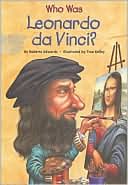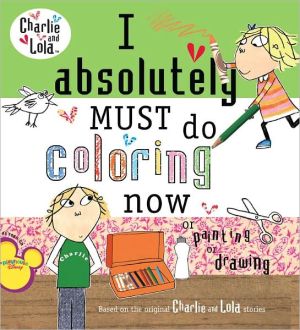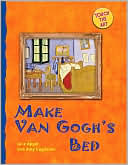It's a Snap!: George Eastman's First Photo
In 1877 in Rochester, New York, George Eastman couldn’t understand why picture-taking was so difficult. Having left school at fourteen to support his mother and two sisters, George decided to find out by making photography his hobby. He packed up glass plates, a plate holder, a tent, a heavy tripod, a thick piece of black cloth, a water jug, and chemicals and set off to take his first photograph. \ George realized that not many people could own a camera — they were too expensive and the size...
Search in google:
In 1877 in Rochester, New York, George Eastman couldn’t understand why picture-taking was so difficult. Having left school at fourteen to support his mother and two sisters, George decided to find out by making photography his hobby. He packed up glass plates, a plate holder, a tent, a heavy tripod, a thick piece of black cloth, a water jug, and chemicals and set off to take his first photograph. George realized that not many people could own a camera — they were too expensive and the size of today’s microwave ovens! But how could he make picture-taking easier? Eventually, George created dry plates, and they were such a success that he opened his own dry-plate company in 1881. But this was only the beginning — George went on to invent film and the Brownie camera. The rest is history.Monica Kulling’s spunky, playful text is beautifully complemented by the stunning pen-and-ink with watercolor illustrations of artist Bill Slavin. It’s a Snap! George Eastman’s First Photo introduces a new series for Tundra — the Great Idea Series — a must-have for schools, libraries, and parents alike.Children's LiteratureEastman believed that taking pictures should be much simpler than it was when he took his first photograph in 1877. In this picture book biography, Kulling captures the spirit and fortitude of the man who made photography simple enough for even a child to take a picture, and who took the world by storm with his easy-to-use cameras and film. Readers will learn about the invention of film for cameras (something most children are unfamiliar with these days), the creation of the Eastman Kodak Company, and Eastman's philanthropy. The book reads well. The humor in both the text and watercolor illustrations will appeal to young readers. There are sepia-toned illustrations that look like old photographs as well as the full-color illustrations that depict the time period. One sepia drawing depicts Eastman's first known photograph. I consulted an expert from the George Eastman House and learned there are some factual errors in this book. While he did mix chemicals in his mother's kitchen he did not bake "the plates in his mother's oven" as stated by Kulling. There is also some license taken where Eastman is depicted tossing the dry plates into a waste basket in the living room with one hand while holding film in the other. Readers get a lovely bird's-eye view of the conservatory in the Eastman mansion where they can see George and his mother enjoying breakfast and organ music. Unfortunately, the elephant head that can be seen on the wall was not there during Mrs. Eastman's lifetime. The last page gives the reader some tips on taking photographs. Kulling does not list sources for this biography. Despite the errors, this is a good introduction to this inventor, businessman, and philanthropist. Itis an engaging look at the evolution of cameras and photography from cumbersome and time-consuming wet plates to film. Reviewer: Sharon Salluzzo
\ Children's Literature - Sharon Salluzzo\ Eastman believed that taking pictures should be much simpler than it was when he took his first photograph in 1877. In this picture book biography, Kulling captures the spirit and fortitude of the man who made photography simple enough for even a child to take a picture, and who took the world by storm with his easy-to-use cameras and film. Readers will learn about the invention of film for cameras (something most children are unfamiliar with these days), the creation of the Eastman Kodak Company, and Eastman's philanthropy. The book reads well. The humor in both the text and watercolor illustrations will appeal to young readers. There are sepia-toned illustrations that look like old photographs as well as the full-color illustrations that depict the time period. One sepia drawing depicts Eastman's first known photograph. I consulted an expert from the George Eastman House and learned there are some factual errors in this book. While he did mix chemicals in his mother's kitchen he did not bake "the plates in his mother's oven" as stated by Kulling. There is also some license taken where Eastman is depicted tossing the dry plates into a waste basket in the living room with one hand while holding film in the other. Readers get a lovely bird's-eye view of the conservatory in the Eastman mansion where they can see George and his mother enjoying breakfast and organ music. Unfortunately, the elephant head that can be seen on the wall was not there during Mrs. Eastman's lifetime. The last page gives the reader some tips on taking photographs. Kulling does not list sources for this biography. Despite the errors, this is a good introduction to this inventor, businessman, and philanthropist. Itis an engaging look at the evolution of cameras and photography from cumbersome and time-consuming wet plates to film. Reviewer: Sharon Salluzzo\ \ \ \ \ School Library JournalGr 1–4— This picture-book biography begins in 1877, in Rochester, NY, with Eastman buying his first camera. Weighted down with all of the necessary supplies, he set out to take a picture. Several people in town, including the grocer, blacksmith, and baker, followed him and became part of it. Unfortunately, the picture-taking process took too long and the bored townspeople headed home before he could develop the wet plate. Eastman was determined to make photography easier and more affordable for everyone. During the next eight years, he invented the dry plate, the first roll of film, and the Kodak camera, and started the Eastman Kodak Company. The book will entertain and inform readers even though the author uses a significant amount of unattributed dialogue. Slavin's pen-and-ink and watercolor illustrations showing how Eastman, his mother, and the family dog changed over the years complement the text.—Michele Sealander, Hamburg School, NJ\ \ \ Kirkus ReviewsAs a reprieve from long hours in the banking business, George Eastman pursued photography as a hobby. In 1877 this was a demanding pastime that involved armloads of equipment and an arduous chemical process. He imagined a better way and tinkered for several years to create dry plates and then film. The resulting invention, the Kodak camera, put photography into the hands of the mass public for the first time. It's challenging to explain the origins of a device that is currently ubiquitous (for the many readers who will wonder what "film" is, there is a concluding note that mentions digital photography). Kulling's narrative frames this history in relatable terms through Eastman's life and work. Some details of his processes are obscure, and a few phrases may confuse young readers ("George had a brain wave"). Slavin's pen-and-ink-with-watercolor illustrations depict the time, while grayscale scrapbook-style pictures evoke the look of early photography. This inaugural title in the Great Idea series is lively, but the unsourced dialogue and the absence of any bibliography or suggestions for further reading is regrettable. (Picture book. 4-8)\ \








